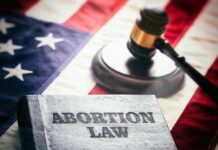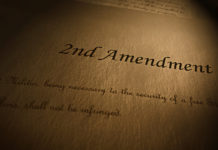When the U. S. Supreme Court issued its seminal rulings in Heller (2008) and McDonald (2010), finding that the Second Amendment does in fact guarantee an individual right to keep and bear arms that must be recognized by the states, many Americans felt like the issue of the Second Amendment had finally been settled in America. Unfortunately, as we would quickly see in Chicago, Washington, D.C., and elsewhere — it was only the latest chapter in what has become an endless battle for the natural right of self-defense.
Take, for instance, the District of Columbia’s post-Heller “fix” to its unconstitutional gun laws — forcing citizens to obtain a license to carry firearms outside their home, but failing to provide any mechanism by which to obtain a license. In other jurisdictions, including Illinois and Seattle, officials attempted to create de facto gun bans by increasing the cost of ownership through taxes and fees, regardless of the impact on minority citizens. Former President Obama, too, had his own way of side-stepping these otherwise clear Supreme Court rulings, and employed the resources of numerous agencies and departments — most of which have no colorable jurisdiction over firearms, such as the FDIC and CDC – in an often unnoticed drive to undermine the 2nd Amendment.
You have to give gun control advocates points for being clever; which is what makes a recent ruling by the U.S. Court of Appeals for the 4th Circuit all the more frightening.
Despite the clear, well-reasoned rulings in Heller and McDonald, the 4th Circuit took the exact opposite approach in upholding Maryland’s “assault weapon” ban; and, in doing so, created an entirely subjective litmus test for what types of guns could be regulated by the State. The appellate Court found that Maryland’s ban of 81 firearms was “legal” because the guns were “weapons of war.” This conclusion is beyond laughable, insofar as U.S. military versions of such civilian firearms are capable of fully automatic fire, which the civilian versions at issue in the court case are not.
The Fourth Circuit justices, like Bill Clinton with his 1994 “assault weapons” ban, chose to base its decision not on facts, history, or common sense, but on whether the firearms at issue “looked” like military-style firearms. “La La Land” wins again.
As Justice Clarence Thomas noted in 2015, “if a broad ban on firearms can be upheld based on conjecture that the public might feel safer (while being no safer at all), then the Second Amendment guarantees nothing.”
Perhaps now the Supreme Court might finally hear a challenge to these arbitrary bans on semi-automatic weapons, after passing on several post-Heller requests for clarification on the issue.
However, despite this ludicrous Fourth Circuit ruling, there have been some positive developments for gun rights. Last week, President Donald Trump signed a bill from Congress that stopped a proposed rule change made in the twilight of the Obama Administration, requiring the Social Security Administration (yet another agency employed by Obama in his war on guns) to report to the FBI citizens deemed “mentally defective,” so as to prevent them from owning firearms — without any due process before depriving them of this constitutional right. The fear, and rightfully so, is that this list of disqualifying factors of gun ownership would include non-impairing conditions, such as eating disorders.
Another bill aimed at protecting innocent Americans from having their rights arbitrarily curbed is the “Concealed Carry Reciprocity Act of 2017,” a version of which has been introduced in both the House and Senate. The Act intends to create a national system of reciprocity among states for holders of concealed carry permits, eliminating the fear and uncertainty for law-abiding individuals when traveling through states like Connecticut, California, and Maryland. Finally, travelers may be able to exercise their right to self-defense without having to worry about being slapped with a felony simply because they crossed a state line. But this battle is far from over.
Finally, the long-awaited “Hearing Protect Act” may reach the president’s desk this year after failing to do so in 2015. The bill, H.R. 367, would eliminate a $200 fee associated with buying a silencer; but more importantly, remove regulatory hurdles that have kept most law-abiding citizens from purchasing such items since 1934. Liberals, convinced the reality of guns is what they see in a Hollywood movie, are in hysterics; but the truth is silencers (more properly known as “suppressers”) muffle, but do not eliminate, the report of a firearm being fired, so as to protect the hearing of the shooter and those in the vicinity.
The first weeks of Trump’s presidency have been filled with at least a few wins for the Second Amendment. However, it is more important than ever to be vigilant about the counter-efforts of gun control advocates, who remain very much alive and well in both houses of Congress — and in both parties— and in state legislators from coast to coast.


































